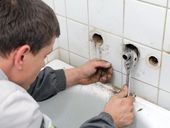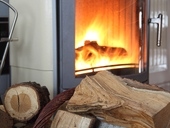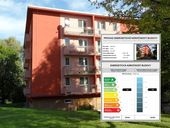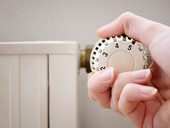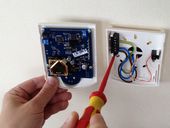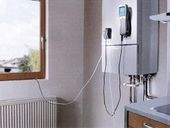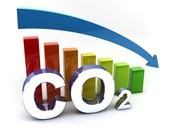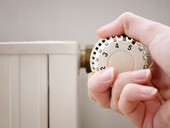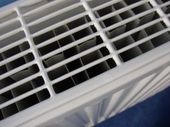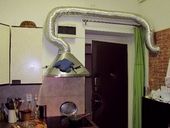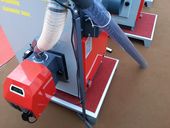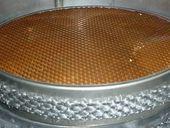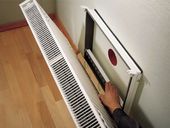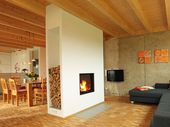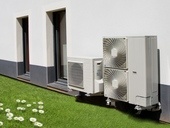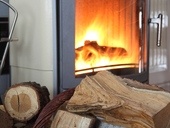Less experienced HVAC field service managers sometimes tend to have difficulties in identifying the causes of technical problems that common practice brings. The table in the article can be used both ways – to find the cause of the problem or use it as a basis for a maintenance plan designed to prevent the faults and equipment failures.
Archiv článků od 27.5.2013 do 2.9.2013
The thermoelectric transformation of waste heat into electric power is considered to be a promising technology enabling to enhance electric efficiency of current energy processes, fuel saving and emissions reduction. The submitted paper deals with the construction of thermoelectric generators, current thermoelectric applications and their potential utilization.
The study 2013 was focused on proving or disproving the legitimacy of commonly recommended nonparallel heating with individual heating mode, elected by users of the flats in apartment buildings. The result is important knowledge for the fields of main building production, heating, heating regulation, centralized heat supply and for users of residential units, whose thermal comfort and heating economy are dependent on the heating of their neighbor.
In recent years, there are significant technical and legislative changes in the field of thermal energy, efficiency of its production, distribution and use. The legislation went so far that it begins to interfere with the rights of users (consumers of heat). This is despite validity of the rules heating, where are relatively well established technical requirements for the design, supply and installation of heating systems, their regulation and compliance with temperatures in heated rooms. This happened on the basis of the rules that began to budgeted costs for consumed heat in a way that does not correspond to physical principles and real heat transfer and requires it in this case controversial obligations (Decree No. 372/2001 Sb., Act 318/2012 Sb. and the Act 67 / 2013 Sb.).
In recent years, there are significant technical and legislative changes in the field of thermal energy, efficiency of its production, distribution and use. The legislation went so far that it begins to interfere with the rights of users (consumers of heat). This is despite validity of the rules heating, where are relatively well established technical requirements for the design, supply and installation of heating systems, their regulation and compliance with temperatures in heated rooms. This happened on the basis of the rules that began to budgeted costs for consumed heat in a way that does not correspond to physical principles and real heat transfer and requires it in this case controversial obligations (Decree No. 372/2001 Sb., Act 318/2012 Sb. and the Act 67 / 2013 Sb.).
In practice we constantly fix difficulties in applying the conditions for the correct placement of appliances category B, that take away combustion air from the sorrounding of the appliance and the flue gas is removed through the flue and chimney above the roof. It is important to mention that this category of appliance participates most in flue gas poisoning including poisoning with fatal aftermath, occurring in tens of cases in the Czech Republic for the year. It is caused by the incorrect application of regulatory requirements, ie in particular the TPG 704 01.
The emissions trading scheme, EU's flagship climate policy tool, is at a turning point. With the price of carbon hovering way below €5 per tonne and a glut of permits on the market, something must be fixed or the instrument will turn to dust. As a first step towards correcting the problem, the European Commission has proposed a measure to withhold pollution permits temporarily, a process called ‘back-loading'. Back-loading appears harmless enough as all withheld allowances would re-enter the market before the end of this decade. Therefore the European Commission and many stakeholders recognise that structural measures are needed so that the ETS would support the transition towards a low-carbon economy.
In recent years, there are significant technical and legislative changes in the field of thermal energy, efficiency of its production, distribution and use. The legislation went so far that it begins to interfere with the rights of users (consumers of heat). This is despite validity of the rules heating, where are relatively well established technical requirements for the design, supply and installation of heating systems, their regulation and compliance with temperatures in heated rooms. This happened on the basis of the rules that began to budgeted costs for consumed heat in a way that does not correspond to physical principles and real heat transfer and requires it in this case controversial obligations (Decree No. 372/2001 Sb., Act 318/2012 Sb. and the Act 67 / 2013 Sb.).
In practice we constantly fix difficulties in applying the conditions for the correct placement of appliances category B, that take away combustion air from the sorrounding of the appliance and the flue gas is removed through the flue and chimney above the roof. It is important to mention that this category of appliance participates most in flue gas poisoning including poisoning with fatal aftermath, occurring in tens of cases in the Czech Republic for the year. It is caused by the incorrect application of regulatory requirements, ie in particular the TPG 704 01.
Sales of heat sources in the Czech Republic has in the last few years permanently decreasing trend. Stems from the data collected by the Association of heating technology (APTT). In the following, we bring evaluate the results of annual sales of heat sources processed on the basis of information obtained from the producers of heating technology.
Emission limits for small combustion devices are becoming stricter. So far, the manufacturers of these devices successfully meet these limits by primary measures, but in the future we can expect greater use of secondary measures. The article describes the advantages and disadvantages of the use of catalytic converters and results obtained on a real combustion device.
In practice we constantly fix difficulties in applying the conditions for the correct placement of appliances category B, that take away combustion air from the sorrounding of the appliance and the flue gas is removed through the flue and chimney above the roof. It is important to mention that this category of appliance participates most in flue gas poisoning including poisoning with fatal aftermath, occurring in tens of cases in the Czech Republic for the year. It is caused by the incorrect application of regulatory requirements, ie in particular the TPG 704 01.
Production of pollutants are associated with the burning of solid fuels in local fireboxes (stoves, fireplaces, tile stoves) and that is why different and more restrictive requirements (emission and efficiency) are subsequently accepted in respective countries in the EU. The requirements are aimed mainly at the manufacturer or importer of combustion equipment, whose are obliged to approve their fulfillment by the placing on the market (certification). This is a different approach in comparison with hot water boilers, where the requirements are directed not only to manufacturers and importers, but also to the operator. Partly, this is changed for the Czech Republic, where the new “Clean Air Act” also introduces obligations for operators of local fireboxes with heating exchanger (part of the heat is transferred into heating water). The aim of this article is to provide an overview of existing and planned requirements and also make their comparisons.
Centralized provision of hot water in the apartment building is associated with the specifics of four (commercial space, unmetered amount of heat for the preparation and distribution of hot water, the limits of specific consumption of heat, heat supply technology for domestic hot water through residential transfer stations).
The paper analyses available data sources on the use of renewable energy in Czech households from which it is possible to derive the current distribution of these sources in the Czech residential sector. Available data provide information about biomass, solar and heat pump installations. The data indicate that the most frequently used renewable energy source among Czech households is biomass, which is the main source of heating in approximately 8 % of inhabited dwellings. Heat pumps are installed in 0.5 % and solar energy is used in at least 1 % of all the Czech inhabited dwellings. It also indicates that these renewable energy sources are far more used in detached family houses rather than in apartment houses. Overall, most of the renewable energy sources used in Czech households are in the Central Bohemian Region, the least in Karlovy Vary Region and the capital city of Prague. Although the datasets do not provide enough evidence to derive any reliable development trends, they provide useful information on the minimal distribution of these resources in the past 10 years and also the effect of selected policy instruments to support the use of these resources on Czech households in comparison with the situation before they came into force.
This report is the result of processing all the available statistical sources that relate to the development of small combustion devices supply on the domestic market and its structure. Department of Resources and Energy Statistics acceded to this investigation due to the lack of comprehensive information about the number of devices, and to demand for this type of information.
zpět na aktuální články
